Papers by Kristoffer Jensen
Jensen, K. & Hebert, D. G. (2016). Evaluation and Prediction of Harmonic Complexity Across 76 Yea... more Jensen, K. & Hebert, D. G. (2016). Evaluation and Prediction of Harmonic Complexity Across 76 Years of Billboard 100 Hits. In R. Kronland-Martinet, M. Aramaki, and S. Ystad, (Eds.), Music, Mind, and Embodiment (pp.283-296). Switzerland: Springer.
Bulletin of the American Astronomical Society, Mar 1, 1989
Cmmr, 2008
Описание: The field of computer music is interdisciplinary by nature and closely related to a num... more Описание: The field of computer music is interdisciplinary by nature and closely related to a number of computer science and engineering areas such as information retrieval, programming, human-computer interaction, digital libraries, hypermedia, artificial ...
Lecture Notes in Computer Science, 2009
The 'chunk'phenomenon has attracted some attention lately. In the audit... more The 'chunk'phenomenon has attracted some attention lately. In the auditory domain a chunk is seen as a segment of sound. This work first investigates theories of chunks from cognitive science and musicology. We define the chunk as a closed entity of a certain size and with ...
Lecture Notes of the Institute for Computer Sciences, Social Informatics and Telecommunications Engineering, 2013
Lecture Notes of the Institute for Computer Sciences, Social Informatics and Telecommunications Engineering, 2012

International Journal of Arts and Technology, 2014
The Farey sequences can be used to create the Euler totient function, by identifying the fraction... more The Farey sequences can be used to create the Euler totient function, by identifying the fractions for number n that did not occur in all Farey sequences up to n -1. This function creates, when divided by n -1, what is here called the primety measure, which is a measure of how close to being a prime number n is. The quality of a number sequence can be determined using the primety, which is further generalised to real numbers through the use of real numbered Farey sequences. Ambiguous and interesting results are obtained in this process; for instance it seems that all integers approach full primety when investigated in the real domain. The corresponding numerical sequences are furthermore shown to have interesting artistic properties. In particular the fractal behaviour is interesting. To further investigate fractal ambiguity, common fractals are extended with random elements, which render softer or more varied shapes. , treating signal processing applied to music with a physical and perceptual point-of-view. This mainly involved classification, and modelling of musical sounds. He has been involved in synthesisers for children, state of the art next generation effect processors and signal processing in music informatics. His current research topic is signal processing with musical applications, and related fields, including perception, psychoacoustics, physical models and expression of music. He has chaired more than eight major conferences, been the editor of many books and conference proceedings and published more than 200 papers, and he currently holds a position at the Institute of Architecture, Design and Media Technology, Aalborg University Esbjerg as an Associate Professor. This paper is a revised and expanded version of a paper entitled 'Numerical investigation of the primety of real numbers' presented at Second International Conference, ArtsIT 2011, Esbjerg, Denmark, December 2011.
Lecture Notes in Computer Science, 2014
International Journal of Arts and Technology, 2014
This article presents SoundShaping, a system to create ceramics from the human voice and thus how... more This article presents SoundShaping, a system to create ceramics from the human voice and thus how digital technology makes new possibilities in ceramic craft. The article is about how experiential knowledge that the craftsmen gains in a direct physical and tactile interaction with a responding material can be transformed and utilised in the use of digital technologies. SoundShaping is based on a generic audio feature extraction system and the principal component analysis to ensure that the pertinent information in the voice is used. Moreover, 3D shape is created using simple geometric rules. The shape is output to a 3D printer to make ceramic results. The system demonstrates the close connection between digital technology and craft practice. Several experiments and reflections demonstrate the validity of this work.

International Journal of Arts and Technology, 2014
ABSTRACT This article chronicles the research of the Nordic Network of Music Informatics, Perform... more ABSTRACT This article chronicles the research of the Nordic Network of Music Informatics, Performance and Aesthetics (NNIMIPA), and shows how the milieux bridge the gap between the disciplines involved. As examples, three projects within NNIMIPA involving performance interaction examine the role of audio and gestures in emotional musical expression using motion capture, the visual and auditive cues musicians provide each other in an ensemble when rehearsing, and the decision processes involved when a musician coordinates with other musicians. These projects seek to combine and compare intuitions derived from low-tech instructional music workshops that rely heavily on the use of whole-body gestures with the insights provided by high-tech studies and formal logic models of the performing musician, not only with respect to the sound, but also with regard to the movements of the performer and the mechanisms of group coordination.
Lecture Notes in Computer Science, 2013
Principles, Algorithms and Systems, 2011
ABSTRACT In this work, automatic segmentation is done using different original representations of... more ABSTRACT In this work, automatic segmentation is done using different original representations of music, corresponding to rhythm, chroma and timbre, and by calculating a shortest path through the selfsimilarity calculated from each time/feature representation. ...
Lecture Notes in Computer Science, 2012
Studies in Computational Intelligence, 2014
This paper presents Megame [me-ga-me], a multiplatform game for working memory training and asses... more This paper presents Megame [me-ga-me], a multiplatform game for working memory training and assessment. Megame uses letters and words to amuse, train and assess memory capacity. Based on memory research, the main parameters of the working memory have been identified and some improvement possibilities are presented. While it is not clear that the working memory in itself can be improved, other cognitive functions are identified that may be improved while playing Megame. Other uses of Megame include spelling and vocabulary training and learning modality assessment. Megame is written in Python using an agile and iterative approach, taking advantage from rapid prototyping and allowing for user-driven development.
Lecture Notes of the Institute for Computer Sciences, Social Informatics and Telecommunications Engineering, 2012
Digital technology makes new possibilities in ceramic craft. This project is about how experienti... more Digital technology makes new possibilities in ceramic craft. This project is about how experiential knowledge that the craftsmen gains in a direct physical and tactile interaction with a responding material can be transformed and utilized in the use of digital technologies. The project presents SoundShaping, a system to create ceramics from the human voice. Based on a generic audio feature extraction system, and the principal component analysis to ensure that the pertinent information in the voice is used, a 3D shape is created using simple geometric rules. This shape is output to a 3D printer to make ceramic results. The system demonstrates the close connection between digital technology and craft practice.
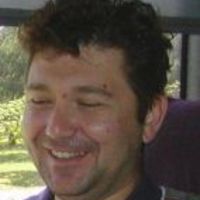
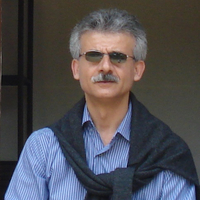

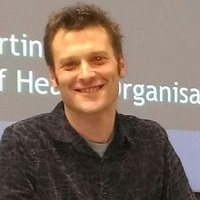

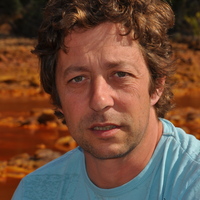
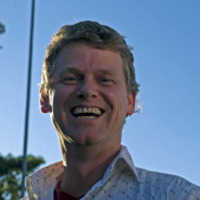
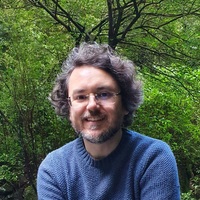

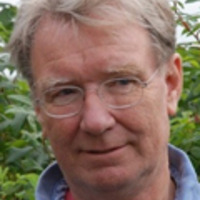
Uploads
Papers by Kristoffer Jensen